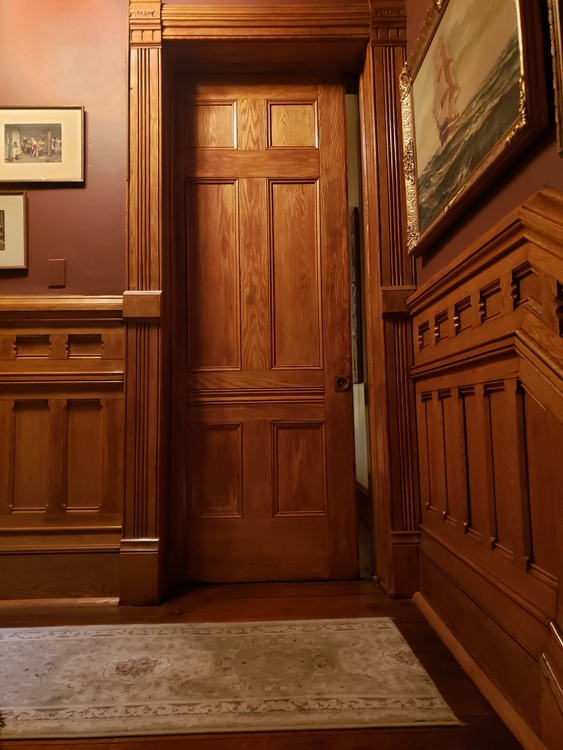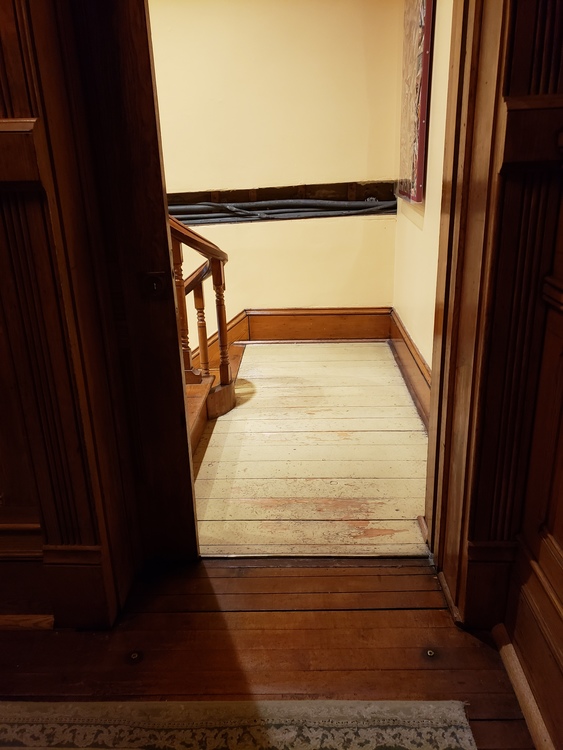Grand Staircase - History of Appleton and America
Grand Staircase - History of Appleton and America
Pause for a momment here on the landing. Pocket doors were very common in Victorian homes, however, this is the only pocket door at Hearthstone. It marks the stark difference between the servant and family sides of the house. Please notice on each side the floor; the balistrade; and the baseboard molding versus the wainscoting.
The opening in the wall shows the original led plumbing in the house that was used for drain lines, gas lines, and water supply lines. Led plumbing, of course, was a severe health hazard.
In fact, notice where led solder has been applied to mend breaks. A Victorian plumber would have applied that solder hot to the pipes and then donned asbestos gloves to hand shape the joint. This means that the plumber would have been inhaling the dangerous fumes and asbestos fibers every day while on the job. But these were only some of the hazards in Victorian homes.
Arsenic, for example, was found in green dyes for dresses and wallpaper, medicines, and cosmetics. Flies, mice, rats, and other vermin carried disease.
Illnesses were common and often uncontrollable. Diseases like typhus, typhoid, cholera, scarlet fever, yellow fever, and tuberculosis were ever present. When added to carriage accidents and industrial accidents (the waterwheels in the mills were horribly dangerous), it is unsurprising that the life expectancy in the Victorian era was only 22 years for working-class men; 25 years for middle-class men; and 42 years for upper-class men. In fact, Prince Albert, Queen Victoria's husband who was the richest man in the world at the time, died at 42 from typhoid fever.
Infant mortality was even worse: Three out of every five children in Victorian America died before reaching the age of five. In fact, Kitty Rogers had an older brother and an older sister that both died in infancy. Clearly even the rich were not immune.
By the end of the era, Victorians began to make changes that combatted these dangers. The most important of which was indoor plumbing as we will soon see.
-
Biografia Giovanni Segantini
-
Storia del museo
-
Il Naviglio a ponte San Marco
-
A messa prima
-
Ave Maria a trasbordo
-
La raccolta del fieno
-
Costume grigionese (Ragazza alla fontana)
-
Autoritratto
-
Trittico
-
Mostra temporanea

